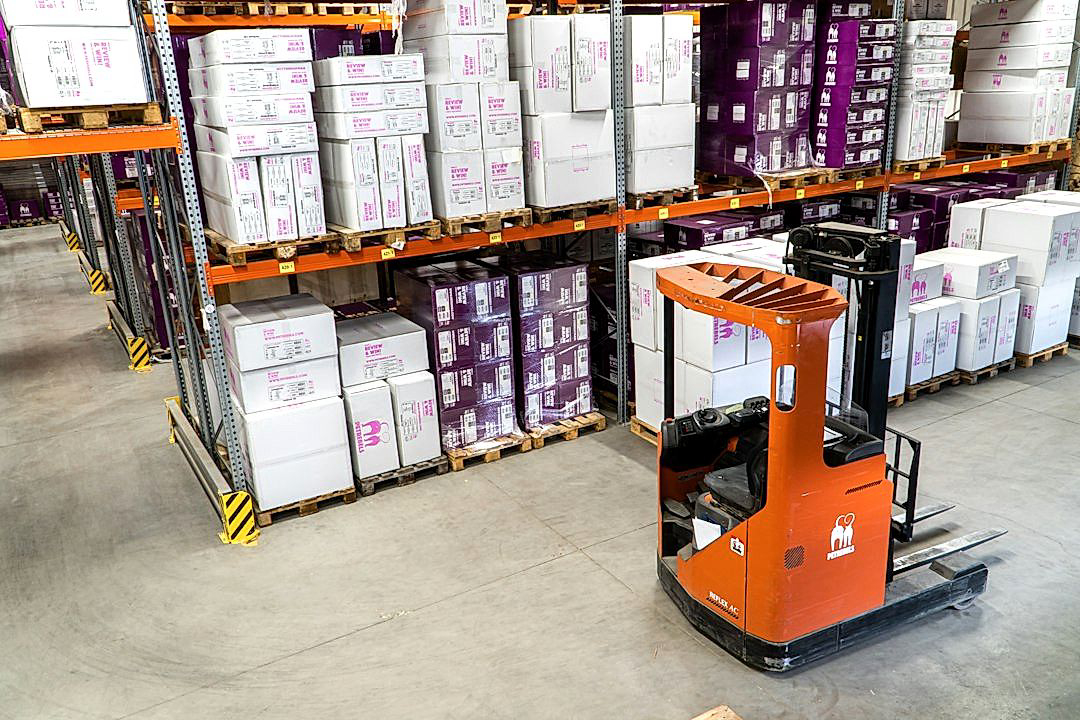Effective management of inventory is a critical element for the success of any produce retailer.
Having an efficient system in place helps maximize profits, curtails waste, and ensures fresh products for customers.
However, navigating this aspect of retail can prove to be a complex task due to the perishable nature of produce.
Regardless of whether you’re a small business owner or part of a larger retail chain, the challenges are universal.
This blog aims to provide practical solutions and approaches for such challenges.
By implementing these proven techniques, retailers can optimize their operations, ensure customer satisfaction, and ultimately, drive their bottom line.
Contents
Inventory Management Techniques For Produce Retail
1. First-In, First-Out (FIFO) Method
The First-In, First-Out (FIFO) method is a fundamental principle in inventory management, particularly critical in the produce retail sector.
By its nature, produce is highly perishable and thus poses a unique challenge in maintaining the freshness and reducing wastage
Essentially, the FIFO ensures that the items that came into the inventory first are sold first, maintaining a consistent cycle of fresh stock.
This method is instrumental in preventing the overstocking of produce and reducing the huge losses that come with spoilage.
Implementing the FIFO method in your business is not merely about organizing your store – it has far-reaching financial implications as well.
The accurate use of the FIFO method can significantly improve revenue by managing the cost of goods sold and enhancing overall inventory valuation.
FIFO helps create a definite link between the inventory costs recorded in your books with the actual goods on your retail shelves.
As such, it facilitates accurate financial reporting that is in line with the Generally Accepted Accounting Principles (GAAP).
Moreover, this method helps to keep your financial records less vulnerable to inflation because your revenue is being calculated based on the cost of older inventory.
This aspect is especially beneficial when there is an upward trend in the cost of produce, which is often the case due to increasing production and labor costs.
Adopting the FIFO method also makes operations more efficient as the workers are not wasting time sifting through the inventory to locate older items.
This efficiency, in turn, speeds up the checkout process, keeping your customers happy and encouraging repeat business.
However, the FIFO method is not without challenges. Often, it requires strict management and continuous monitoring to ensure inventory is properly rotated.
To make it work, retail managers need to meticulously plan the layout and organization of the store for easy access to older produce.
Despite these challenges, bearing testimony to its effectiveness is the fact that it’s a widespread practice adopted by successful retail giants worldwide.
In conclusion, the FIFO system represents an effective and reliable method of managing inventory, particularly for produce retail businesses that deal with perishable goods.
2. Regular Inventory Audits
When managing an inventory, especially in the produce retail industry, a crucial technique to employ is regular inventory audits.
Inventory audits allow businesses to have a clear and accurate understanding of the quantity and value of stock available.
In the absence of these audits, there’s a high risk of inaccurate data, which can lead to making incorrect business decisions or forecasts.
The importance of these audits is magnified in the produce retail industry, given the high perishability of products.
A regular check on the inventory helps in identifying the rate of consumption and the speed of shelf-life depletion, these information are invaluable in inventory planning.
Regular inventory checks also allow businesses to detect discrepancies early, reducing the potential for significant losses due to waste, theft, or other inefficiencies.
Despite the benefits of regular inventory audits, it is important to consider that they can also be time-consuming and expensive if not done effectively.
Perhaps the biggest challenge with inventory audits is maintaining an accurate count of produce, particularly given the rapid pace at which their condition can change.
This is where using reliable systems, whether manual or automated, becomes critical.
There are also several types of inventory audits that can be used, these including full audits, cycle counts, and spot checks.
A full audit entails a complete count of every item in stock and is typically conducted annually or semi-annually.
Cycle counts, on the other hand, involves auditing a different portion of the inventory every day.
Finally, spot checks are unannounced audits conducted at random intervals to ensure inventory accuracy.
Choosing the right audit type involves considering factors such as the size of the inventory, the resources available, and the specific needs of the business.
In conclusion, regular inventory audits, while challenging, are indispensable for efficient inventory management in the produce retail industry.
They provide the necessary data for accurate forecasting, help identify inefficiencies, and ultimately, contribute towards improved customer satisfaction and profitability.
3. Use of Inventory Management Software
In the realm of produce retail, implementing the use of inventory management software can be a game changer in maintaining and controlling stock levels.
This software can offer in-depth inventory control, providing real-time visibility into inventory levels and movements.
Inventory management software can automate tedious tasks such as tracking inventory levels, generating purchase orders, and alerting for low stock levels, thereby increasing efficiency.
The flexibility offered by inventory management software not only minimizes the risk of stockouts and overstocks, but it also improves customer satisfaction.Such systems are often scalable and customizable according to the needs of different types of businesses.
They can accommodate for different types of inventories such as perishable goods – a common type of inventory in produce retail.
Furthermore, the accessibility feature of modern inventory management software enables retailers to access their inventory data anywhere and at any time.
This means that retailers can adapt quickly to sudden changes in inventory levels or sudden influxes of demand.
The software can also enable predictive analysis, which can forecast future inventory needs based on past trends and sales history.
This, in turn, aids in better inventory planning and avoids overstocking or understocking situations.
Aside from this, a software can highlight slow-moving items, guiding you to discontinue them or offer them in sales to clear the stock.
Moreover, the integration abilities of inventory management software with other business systems like accounting, Point of Sale (POS), and supply chain management systems add another layer of convenience for retailers.
To effectively reap the benefits of inventory management software, retailers need to invest time in proper training to ensure that their staff fully understands how to use the system.
This is crucial because a system is only as effective as the people who operate it.
In essence, the adoption of inventory management software in produce retail marks a significant step toward enhanced asset control, improved customer satisfaction, and ultimately increased profitability.
4. Strategic Vendor Partnerships
In the world of produce retail, creating strategic vendor partnerships can play a pivotal role in successful inventory management.
These partnerships can offer unique advantages that help retail businesses to maintain optimal inventory levels, thereby reducing waste and enhancing profitability.
One primary advantage is the flexibility that these partnerships offer in terms of delivery and resupply.
For instance, by building close relationships with suppliers, retailers can negotiate for frequent, smaller deliveries of produce, which reduces the risk of overstocking and consequent spoilage.
Moreover, strategic vendor partnerships often lead to improved forecasting and planning.
This is because vendors can share valuable insights about market trends, upcoming production changes, or potential supply chain disruptions.
In return, retailers can provide their vendors with accurate sales data, which aids in production planning and helps to ensure a steady supply of needed produce.
It’s a mutually-beneficial relationship that hinges on open communication and shared objectives.
Furthermore, a solid vendor partnership can help a retailer gain access to exclusive products or advantageous purchasing terms.
For example, a vendor may offer a special discount or exclusive access to a new product as a bonus for solid, reliable buying behavior.
Strategic vendor partnerships could also lead to a more diversified product selection, providing more options for the customers and making the business more competitive.
The strength and depth of these partnerships directly influence the reliability of the supply chain, affecting how well a retailer can keep shelves stocked with fresh, appealing produce.
It’s important for retailers to view their vendors as essential partners rather than mere suppliers.
By investing in these relationships, both parties can achieve mutual growth and success while contributing to a more efficient and effective inventory management process.
Building and nurturing strategic vendor partnerships, therefore, becomes a key part of inventory management in the produce retail universe.
5. Seasonal Stocking Strategies.
Every business dealing with perishable goods, such as produce retailers, requires a strategic approach to their inventory management.
One such strategy is the use of seasonal stocking.
This involves having a keen understanding of the seasonal trends of produce and adjusting the inventory levels accordingly.
Produce retailers need to plan for the seasonality of different fruits and vegetables, ensuring to stock high volumes of in-season produce and reduce the levels of off-season goods.
This can help avoid unnecessary waste and reduce costs related to overstocking and spoilage.
By leveraging on seasonal stocking strategies, produce retailers can improve inventory efficiency, increase sales performance, and ultimately gain competitive advantage.
Understanding these seasonal fluctuations is not a one-time ordeal but a continually evolving task for produce retailers.
Changes in weather patterns, climate change, the unpredictability of harvests, and other external factors can affect the availability and price of produce.
To mitigate against this, retailers need to have a flexible and adaptable inventory strategy, ready to make necessary adjustments when needed.
This could involve cultivating relationships with different suppliers and producers to ensure a steady supply of inventory throughout the year.
Knowing when to stock up on the right produce and when to scale back can improve the overall functionality of the supply chain, leading to better customer satisfaction.
Another aspect to consider is to anticipate the demand based on past sales data and trends.
This will help in making timely orders for the right quantity of produce and deciding the right time to mark down off-season or nearing-expiry items.
Therefore, effective seasonal stocking strategies not only involve knowing what to stock and when but also using this information to make strategic pricing and promotion decisions.
Utilizing technologies, such as predictive analytics and inventory management software, can aid in compiling, analyzing, and making sense of the data, ultimately guiding these crucial decisions.
With the right seasonal stocking strategies in place, produce retailers can ensure they deliver fresh, high-quality items to their customers while minimizing waste and maximizing profits.
The Bottom Line
Managing warehouse inventory can make or break any business, hence utilizing effective methods remains key to success.
The “First-In, First-out” method ensures products do not become obsolete or spoil, guaranteeing only the best quality for customers.
Regular inventory audits help keep track of inventory levels, preventing stock-outs or overstocking.
By leveraging inventory management software, businesses can automate processes, saving time and resources.
Strategic vendor partnerships come in handy when quick restocks are needed, facilitating a seamless supply chain operation.
Seasonally adjusting inventory levels aligns with changing customer demands, thus enhancing customer satisfaction.
Ultimately, employing these strategic measures will streamline warehouse operations, optimize inventory levels, and boost the overall bottom line.



